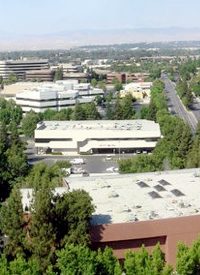
California officials confronted with the difficult task of cleaning the smog-filled San Joaquin Valley with limited financial resources have found a solution: asking San Joaquin Valley drivers to pay the $29 million.
The federal government has fined San Joaquin Valley $29 million for surpassing federal ozone pollution limits, a provision added to the Clean Air Act in 1990. The fine prompted air-quality regulators to propose a surcharge of $10 to $24 million on vehicle registration fees beginning next year.
Defending its proposal, Seyed Sadredin of the San Joaquin Valley Air Pollution Control District, explains, “We, the people, are the ones whom we need to point the finger at,” as vehicles in the region are allegedly responsible for 80 percent of the smog-forming pollution.
The Environmental Protection Agency approved alternative approaches to clean air this year, including surcharges like that proposed by the San Joaquin Valley. The valley was provided the authority to enact fees on vehicles up to $24 by the California Legislature, after regulators asserted that they have exhausted a variety of other options.
The New York Times explains, “The local surcharge plan comes as the Environmental Protection Agency prepares to announce tighter standards for ozone pollution. Those new rules are likely to put many regions of the country that are currently in compliance in the same position as Central and Southern California — facing big fines for pollution that is largely a product of truck and automobile exhaust.”
“We’re saying that for the privilege of driving in the valley, paying an extra $1 a month is preferable to charging industry $29 million,” says Sadredin. He adds that the money brought in by the surcharge will be reinvested in pollution control.
The New York Times writes, “Although the surcharge is not expected to change how much people drive or what cars or trucks they buy, air pollution experts say it is a harbinger of the future. After decades of forcing industry to clean its smokestacks, retool car and truck engines and fine-tune gasoline, regulators are exploring what they can do to force consumers to face up to the pollution they cause.”
Neighboring areas, including Los Angeles, which faces a multi-million dollar fine from the federal government for its pollution, are in consideration of a similar vehicle registration surcharge.
“The problems that L.A. and the San Joaquin Valley have been struggling with for a decade or more will be problems most metro areas will have to grapple with,” remarks Robert Wyman, a Los Angeles attorney who typically represents industrial clients.
Executive director for South Coast Air Quality Management District Barry Wallerstein asserts, “This is a prelude of things to come,” contending that vehicles are “now the dominant source of our ozone problem.”
Not everybody is on board with the idea, however, as areas in Central and Southern California face unemployment rates above 15 percent.
“We’re already in crisis,” said Kojo Amonoo of Stockton, California, who drives a pickup truck approximately 10 miles a day. “There are people who are hurting. Whether you have a job or not, you drive. When you don’t have a job, you need the vehicle to go around and look for jobs.”
Articulating similar sentiments is Dennis Ruitenbeck of San Joaquin Valley: “While the San Joaquin area is so depressed, it’s going to be an undue hardship. Why put an extra burden on people who are suffering?”
Noting that the surcharge targets the consumer, as opposed to the typical strategies targeting car or engine manufacturers, Susana Hildebrand, chief engineer for the Texas Commission on Environmental Quality, observed, “It will be interesting to see how it plays out politically, because people don’t like it when government does that sort of thing.”
Photo: Bakersfield, in California’s San Joaquin Valley



